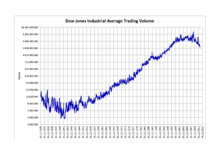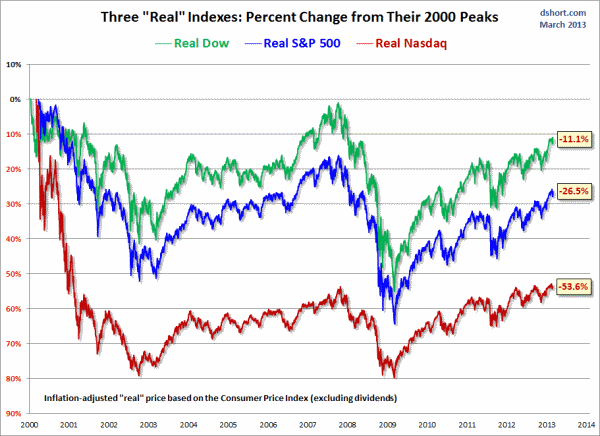Investing in the stock market can be both exciting and nerve-wracking. While investors often strive to achieve positive returns, the reality is that market downturns are an inevitable part of investing. However, there is a way to protect your portfolio and even profit from declining markets – through Inverse DJIA ETFs.
In this article, we will explore what exactly inverse DJIA ETFs are, their benefits and risks, how to choose the right one for your portfolio, and how to incorporate them into your investment strategy.
So whether you’re a seasoned investor or just starting out, get ready to dive into the world of inverse DJIA ETFs and discover how they can potentially enhance your investment experience.
Definition and Explanation of ETF
An Exchange-Traded Fund (ETF) is a type of investment fund that trades on stock exchanges like individual stocks. It allows investors to gain exposure to a diversified portfolio of assets such as stocks, bonds, or commodities without having to buy each security individually.
ETFs offer flexibility, transparency, and potentially lower expenses compared to traditional mutual funds. They provide a convenient way for investors to access specific sectors or target broader market exposure.
Introduction to the DJIA Index
The Dow Jones Industrial Average (DJIA), or “the Dow,” is a well-known stock market index consisting of 30 leading publicly traded companies. Spanning various industries, these companies are carefully selected for their influence and market significance.
As a benchmark for the U.S. stock market, the DJIA’s fluctuations offer insights into investor sentiment and can impact investment portfolios. By monitoring this index, investors gain valuable information about overall market performance and economic trends.
Definition and Explanation of Inverse ETFs
Inverse ETFs are unique investment tools that aim to provide returns opposite to the performance of their underlying index or benchmark. When the index experiences a downturn, inverse ETFs increase in value, offering potential profits for investors.
For example, if you anticipate the Dow Jones Industrial Average (DJIA) to decline, investing in an inverse DJIA ETF allows you to potentially benefit from that downward movement.
These funds utilize financial instruments and derivatives like futures contracts and swap agreements to achieve daily returns inversely proportional to the index’s performance.
Unlike short-selling individual stocks, inverse ETFs offer flexibility and accessibility as they can be easily bought or sold on major exchanges during regular trading hours.
Investing in inverse DJIA ETFs provides advantages beyond potential profits during market declines. They allow diversification without selling individual stocks or using options contracts, providing a hedge against market volatility and enhancing risk management strategies.
However, it is essential for investors to understand the unique characteristics and risks associated with inverse ETFs before investing. While they offer opportunities for profit in bearish markets, their performance may not align with expectations during periods of high volatility or prolonged market downturns.
In summary, inverse ETFs offer an innovative approach for investors seeking gains when markets decline. Understanding their features and consulting with financial professionals is crucial to determine if these funds align with investment goals and risk tolerance levels.
Protection against market downturns
During market declines, traditional investments like stocks and mutual funds often lose value. However, inverse ETFs offer a unique advantage by aiming to deliver positive returns when the underlying index goes down.
This means that investors can potentially offset losses in their portfolios by holding inverse ETFs tied to indices like the Dow Jones Industrial Average (DJIA). By acting as a hedge against declines in the broader market, these ETFs help reduce overall risk and volatility in investors’ portfolios during turbulent times.
It’s important to note that inverse ETFs are best suited for short-term or tactical use and require active monitoring. Before investing, individuals should evaluate their financial goals and consult with a financial advisor.
Opportunities for Short-Term Trading Gains
Inverse ETFs provide opportunities for short-term trading gains, particularly during periods of high market volatility. These funds have an inverse relationship with the underlying index, allowing traders to profit from quick market movements without short-selling individual stocks.
Leveraged inverse ETFs offer even greater potential returns by providing amplified gains, but they also magnify losses during declining markets. However, it is important to carefully consider the risks associated with investing in these funds, including unpredictable market volatility and potential tracking errors.
Proper research and understanding are crucial for successful trading in inverse ETFs.
Understanding the Risks Involved
Investing in inverse DJIA ETFs comes with risks. Market timing challenges can lead to potential losses if investors fail to accurately predict market movements. These ETFs are designed for short-term trading or hedging, not long-term buy-and-hold strategies.
Additionally, leveraged inverse ETFs reset their leverage daily, which can result in tracking errors and significant deviations from expected performance over time due to compounding effects. It is important for investors to stay informed, conduct thorough research, and consider consulting a financial advisor before investing in inverse DJIA ETFs.
Importance of Thorough Research and Due Diligence
Investing in inverse DJIA ETFs requires thorough research and due diligence. It is crucial to analyze the underlying index, understand its components, and assess their alignment with your investment goals and risk tolerance.
Additionally, monitoring macroeconomic factors that influence performance, such as interest rates or geopolitical events, is essential. When selecting the right inverse DJIA ETF for your portfolio, consider factors like expenses, liquidity, tracking error, trading volume, bid-ask spreads, and historical performance.
Ongoing research and due diligence are necessary to make informed decisions and adapt to changing market conditions. By dedicating time and effort to this process, you enhance the potential for achieving long-term financial objectives.
Evaluating Different Options Available
When selecting an inverse DJIA ETF, it’s essential to evaluate various options based on your investment objectives and risk appetite. Let’s explore some popular inverse DJIA ETFs:
a) ProShares Short Dow30 (DOG)
ProShares Short Dow30 aims to provide daily returns opposite to the performance of the DJIA by using financial instruments like futures contracts and swaps.
b) ProShares UltraShort Dow30 (DXD)
ProShares UltraShort Dow30 is a leveraged ETF that seeks to deliver twice the inverse daily performance of the DJIA, making it suitable for investors seeking amplified gains or short-term trading opportunities.
c) Direxion Daily Dow Jones Bear 3X Shares (DRIP)
Direxion Daily Dow Jones Bear 3X Shares is another leveraged ETF that aims to provide three times the opposite daily performance of the DJIA but carries higher inherent risks.
Apart from these options, there are various other inverse DJIA ETFs available. Consider factors such as expense ratios, liquidity, and tracking error when choosing an inverse DJIA ETF. Lower expense ratios and tighter bid-ask spreads generally indicate better cost efficiency and liquidity for investors.
By thoroughly evaluating these factors, you can make an informed decision on incorporating inverse DJIA ETFs into your investment strategy. Remember to conduct thorough research and consult with a financial advisor for guidance.
[lyte id=’-qXI4k2xI0o’]



.svg/380px-DJIA_2000s_graph_(log).svg.png)



